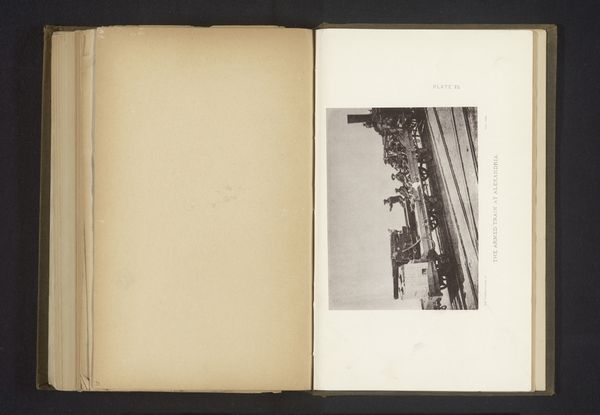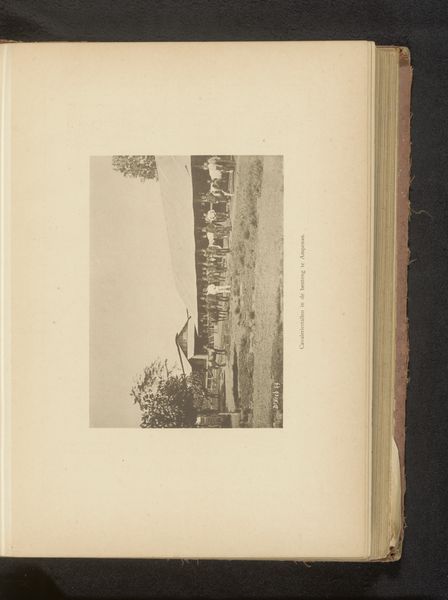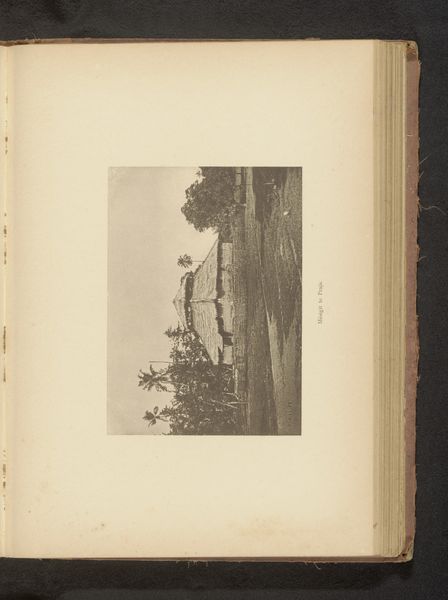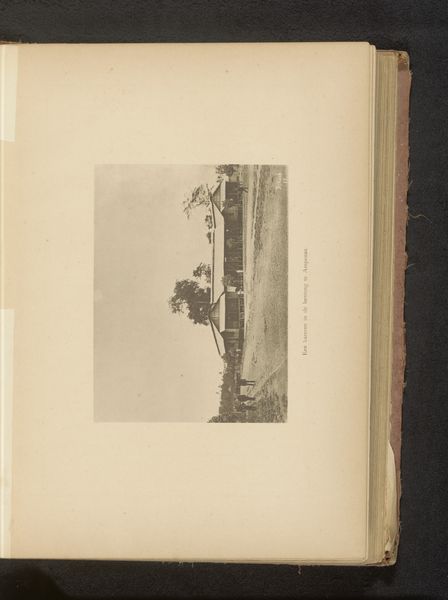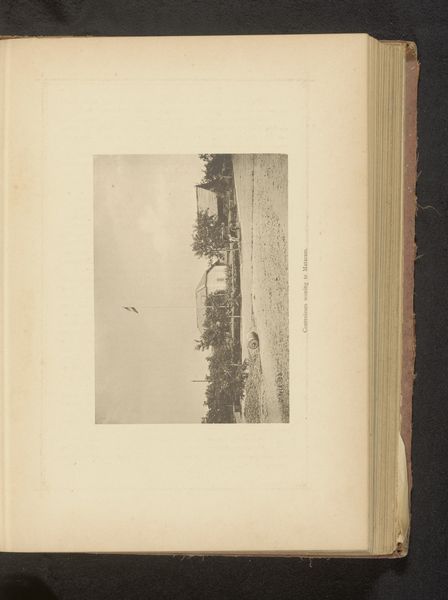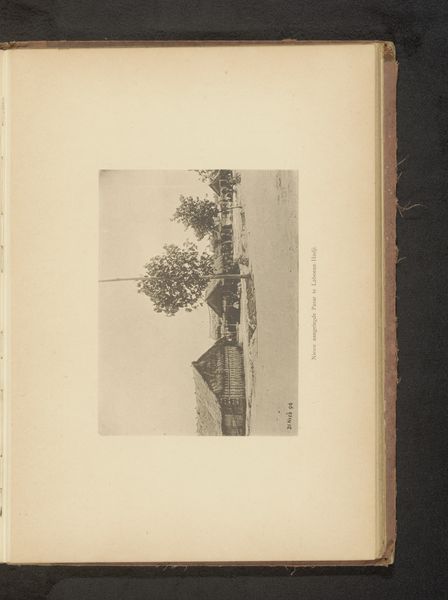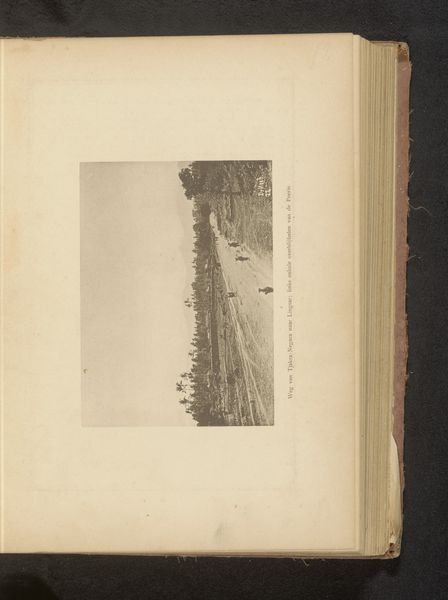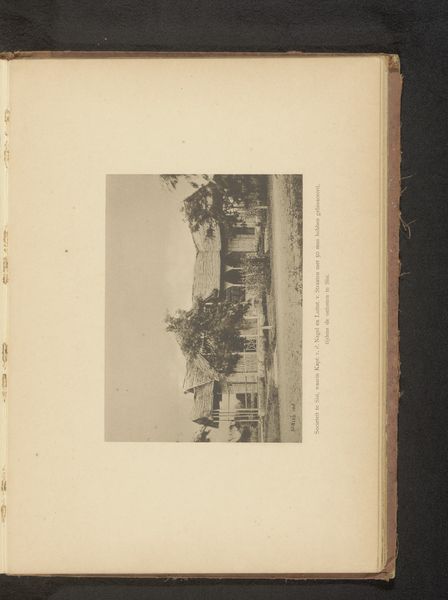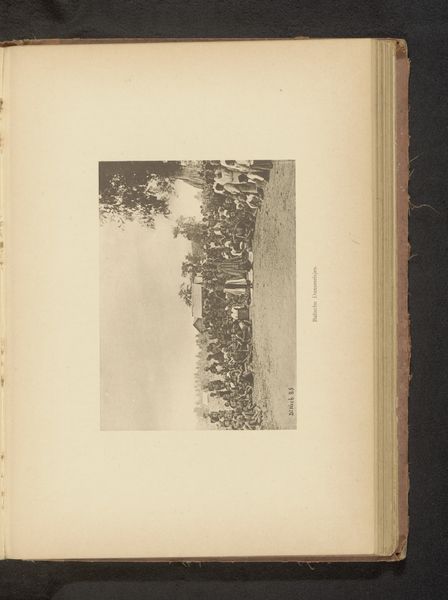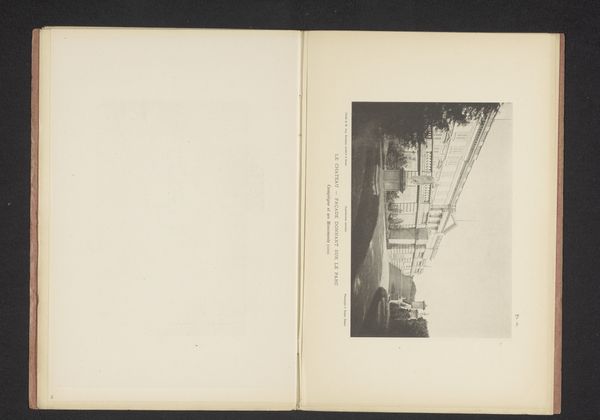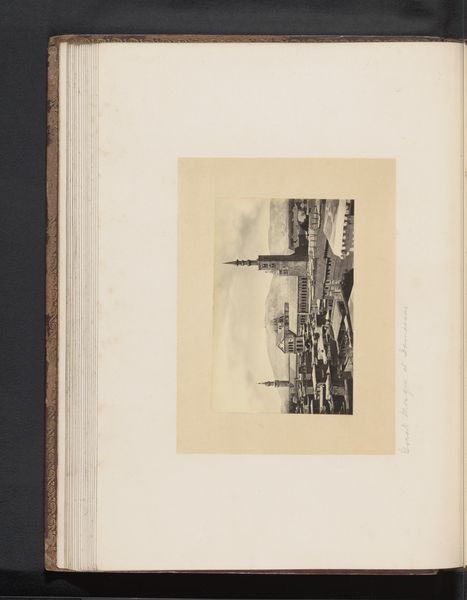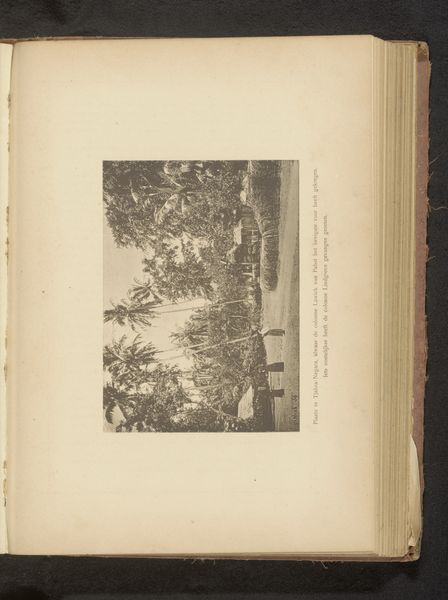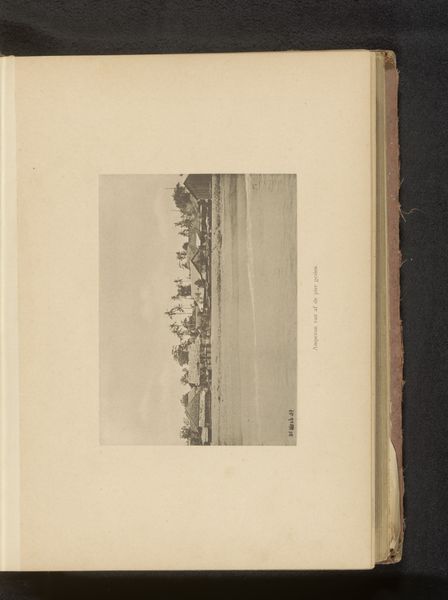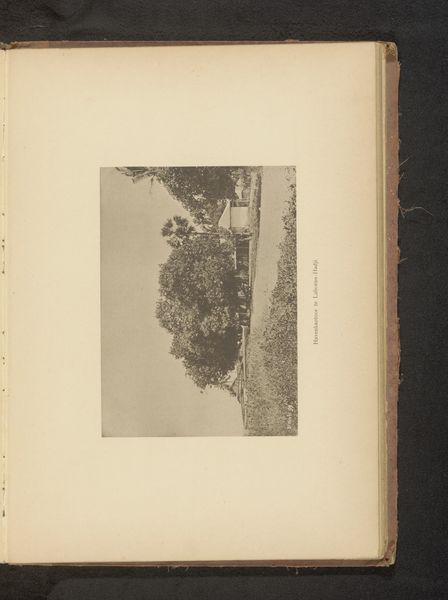
print, photography, gelatin-silver-print
# print
#
landscape
#
photography
#
gelatin-silver-print
#
watercolor
#
realism
Dimensions: height 123 mm, width 164 mm
Copyright: Rijks Museum: Open Domain
Curator: This is “Gezicht op een water met in de verte eilanden,” or “View of a body of water with islands in the distance,” a gelatin silver print made before 1897 by Christiaan Johan Neeb. Editor: It's quiet, almost haunting, in its stark simplicity. The water seems to blend into the sky, making it difficult to see the horizon. What captures my attention, initially, is the photographic print itself – the physical object, seemingly ripped straight from an aged photo album. Curator: That aged quality definitely speaks to the print medium, gelatin silver print. Photography at the time was gaining ground as a mode to capture realism, as this piece clearly attests to the beauty of nature, still pristine with very few alterations. There are only subtle shadows to create texture, leaving most of the imagery to be dominated by light. Editor: Indeed, photography’s burgeoning role speaks to the democratization of art-making. Silver gelatin prints allowed for replication and dissemination of images. The tonal range must also be considered: this isn’t just about capturing light; it's about controlling its density within the chemical process. We could ask about accessibility: who had access to photography then? Curator: Excellent point. Landscape photography became symbolic for ideas of exploration, especially regarding natural wonders previously only rendered through painting, which traditionally symbolized elitist representation. This print opens access for more to observe landscape scenes, imbuing viewers with an implicit symbolic participation in discovery and documentation. Editor: That’s fascinating, particularly thinking of its broader impact beyond purely artistic intention. To extend your symbolic exploration: note the visible aging of the photographic paper. That visible wear is a testament to the print’s existence through time, as a cherished object withstanding touch, movement and environmental changes. Curator: Yes! The preservation of mundane materials often mirrors larger narratives we attach to identity, memory and time. The image transcends into almost haptic memory. Editor: Precisely. The work operates on both a visual and material level, inviting us to ponder about its place and purpose in cultural production. Curator: Definitely makes one pause to contemplate on how symbols transform through visual media across eras. Editor: Agreed, the materiality grounds those big symbolic questions.
Comments
No comments
Be the first to comment and join the conversation on the ultimate creative platform.
